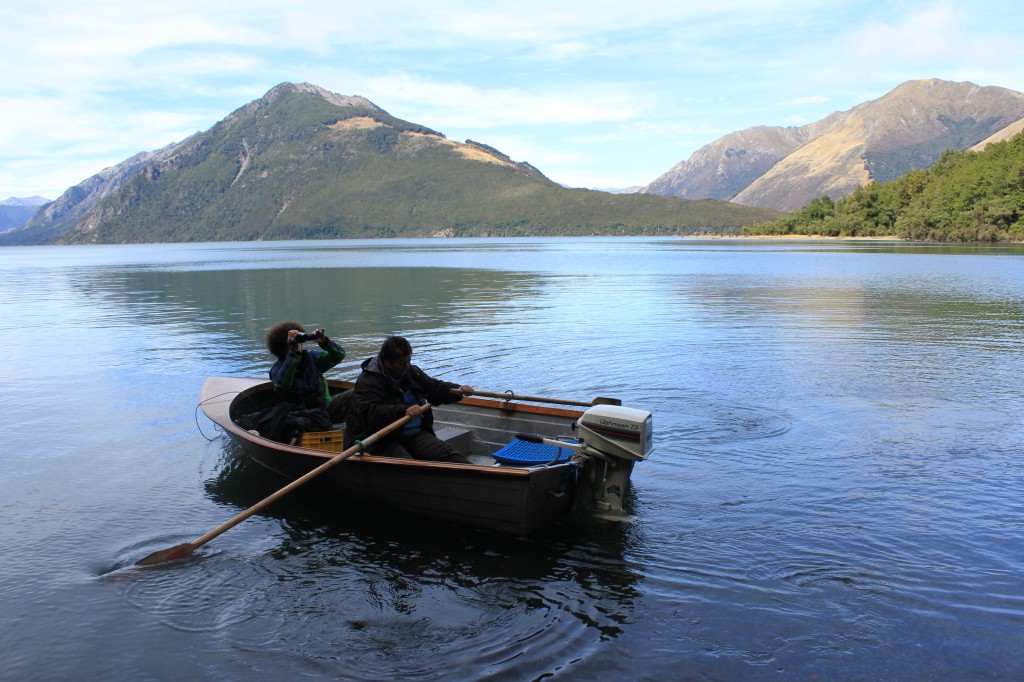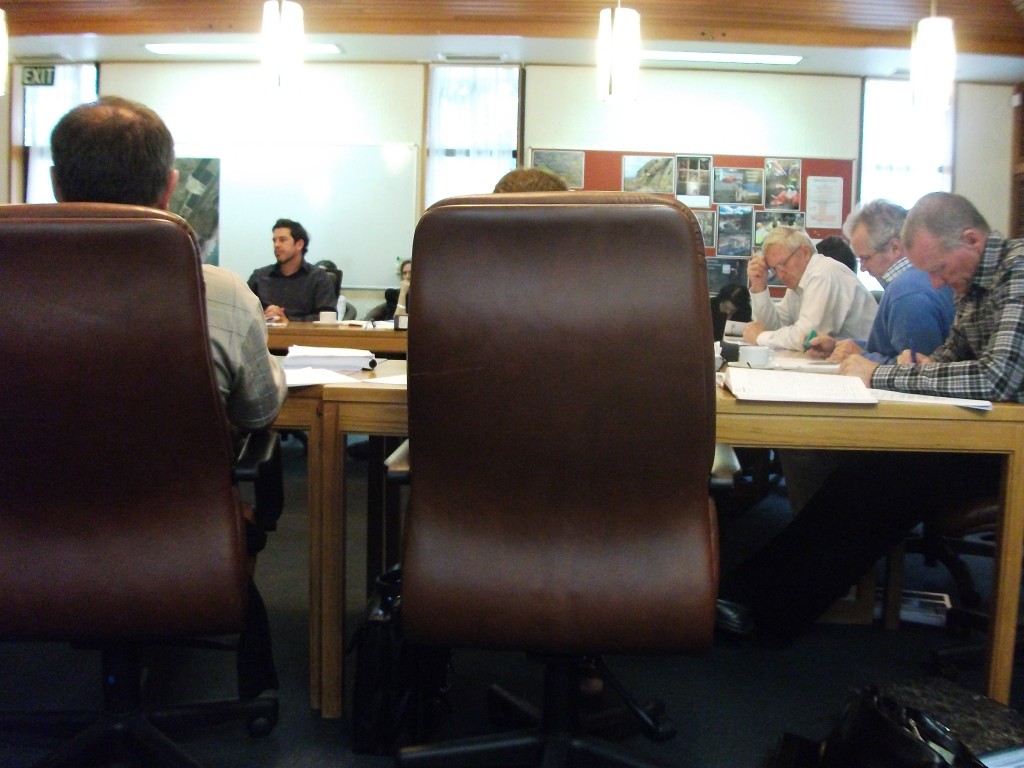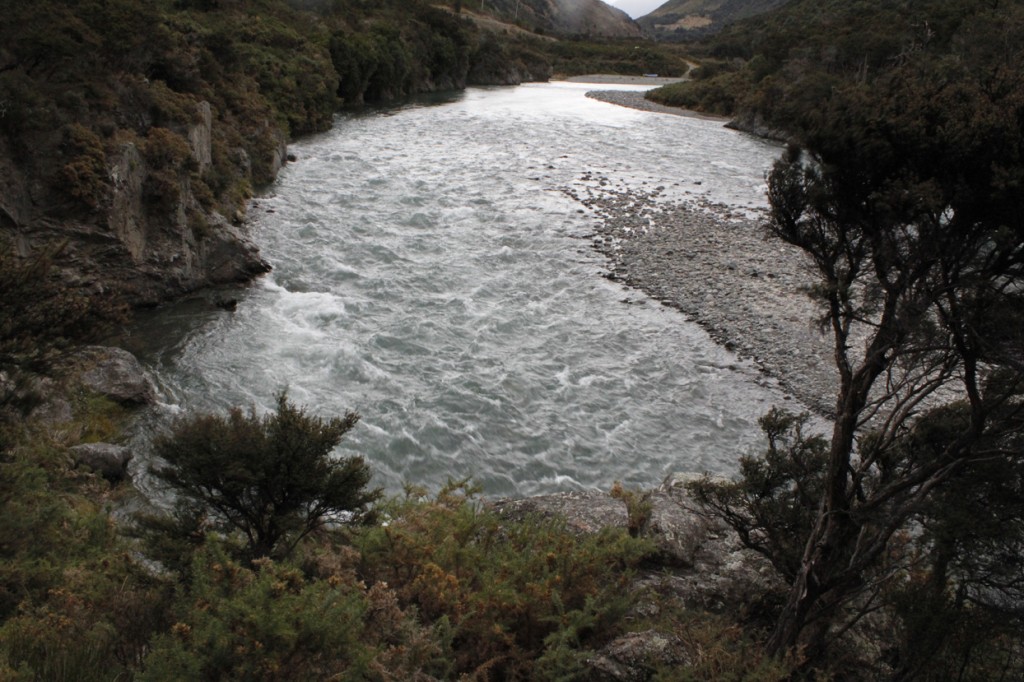The farmers’ water wish list.

It is Canterbury’s new George Orwellian nightmare. It is the last day of january 2011 and a group of undemocratically appointed, mostly middle aged white men, called a zone committee, are meeting in Amberley to divi up the water of the Hurunui-Waiau catchment, meanwhile planning on paying lip service to community involvement about their deliberations, after the fact. On the wall of the meeting room is a sign proclaiming “Hurunui Wellness, In Hurunui, we live the lives the rest of the world would love to live.”
These meetings have to be pushed through double quick as the John Key appointed Commissioners who overthrew the elected Environment Canterbury representatives, want to “to stitch up water by July” so they have a plan to be notified by first of October. The Waiau flow and allocation has to be decided by February and the Hurunui flow and allocation by March. Never mind that the committee does not have the science or costings to make these decisions.
In their pre meeting briefing Lynda Weastell-Murchison,of Environment Canterbury’s Principal Consents and Planning Officer, advises the group that the zonal committee can find their “own integrated solution’ and that “if the law wont let us at the moment so we can find another way, legislative change.”
The tangata whenua belief that the water of two rivers should not be mixed can be got around. Makarini Rupene, the Ngai Tahu representative says of mixing the water of two rivers, “It’s not a fatal flaw. It can be managed”. To his credit he also says “It is the responsibility of those using the water to include the cost of filtering the water, the pollution”.
Mike Hodgen cannot see why water users should pay for predator and weed control, as he does not understand that when the river’s flow is controlled weeds proliferate and the breeding birds cannot see their predators.
These guys have an agenda and it is replumb the environment with dams and weirs to make farming more profitable. On the 31 January 2011 at what was termed an “ordinary meeting” concerned members of the public were twice excluded so that commercially sensitive material could be discussed in private.
On the table are having a weir at Lake Sumner and a 75 metre dam at the south branch of the Hurunui and Ngai Tahu Property’s option proposing in-canal hydro at Balmoral. They propose transferring water from the Hurunui River by pumping 70m to a canal and tunnel through to the upper Waitohoi River to be stored in a 100 m dam near Seven Hills.

They want to pump water from the Waiau River from a canal to a reservoir at Grampians or to a large storage in the upper Pahau.
They are considering a dam and reservoir on the Mandamus River with water pumped from the Hurunui River.
They want to construct a new race to supply Waiau river water to the existing Balmoral Forest. Ngai Tahu received this forest in their Treaty Settlement and now wishes to clear fell and convert to dairy.
They are considering pumping water from the Waiau River to a reservoir at Countless Stream.
Two further confidential options have been presented to the committee that the public was excluded from hearing about.
The group is concerned that Hanmer Basin is missing out on the economic benefit of having its river “managed”.
Lynda Weastell-Murchison advises the group shortly before the public is excluded once more “You will need to outline what the costs will be to the district if nothing goes ahead”.
Winton Dalley made the point that “if the add on costs were too great they would need a partnership with the greater community”. In other words they want you and I to pay for their proposed, grandiose despoiling of our pristine wild rivers. It is telling that David Bedford pointed out that missing from the list was having a good public supply of water.
The situation with the Hurunui zone committee is worrying enough but there are 9 other zone water management committees across Canterbury and they are all basically doing the same thing. Water management really means exploring options for more irrigation and exploiting every possible waterway (above and below ground) to achieve this.
The environmental/ecosystem/public health aspects of water management are simply a sop to the wider public and if implementation of them becomes uneconomical, the zone committees will find ways around implementing them – possibly by suggesting changes to the NRRP (Natural Resources Regional Plan) which has been 10 years in the making and almost completed.
At the Hurunui zone committee meeting, it was clear that the main goal of the committee is to get as much water out of rivers for irrigation and storage options and as soon as possible but the literature the CWMS (Canterbury Water Management Strategy) releases, reads quite differently.
From January 31 2011 update newsletter:
‘The committees already know what they need to achieve – this is defined by the targets. The targets have ten broad areas and set goals for the coming five years, as well as setting milestones in 10 years and 30 years.

The targets cover:
– Ecosystem health and biodiversity
– Braided rivers and natural character
– Kaitiakitanga
– Drinking water
– Recreational use and amenity opportunities
– Water-use efficiency
– Irrigated land area
– Energy security and efficiency
– Regional and national economies
– Environmental limits
To achieve these targets a collaborative and consensus-based approach is needed. We also need time for the right planning tools to be put in place to allow future decisions on how water is managed.’
Interestingly, irrigation comes quite low on the list of targets, but 95% of the meeting on January 31 2011 focused on the best economic way to get water for irrigation; the other targets seemed to be merely window dressing.
Lynda Weastell-Murchison, revealed a staggeringly short time frame for the Hurunui zone committee to implement its water plan, yet in the paragraph above the last sentence reads –‘ We also need time for the right planning tools to be put in place to allow future decisions on how water is managed.’
There has obviously been a decree from on high to get things done so the future of the Hurunui basin is being determined by a bunch of irrigation at all costs despite the environmental consequences, fanatics. Decisions are being made behind closed doors, in haste by people ill equipped to deal with the complex environmental situations. What we saw at the Hurunui zone committee are self-serving men plotting, lets remake the water environment to suit ourselves and stuff the environmental consequences. The farmers’ water wish list will be a nightmare for those of us who wish to preserve Canterbury’s last wild river .

.
